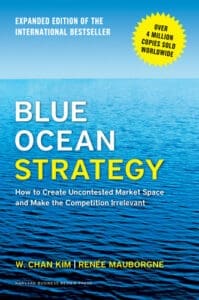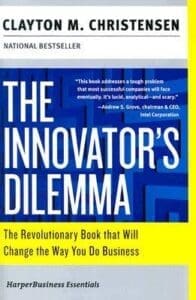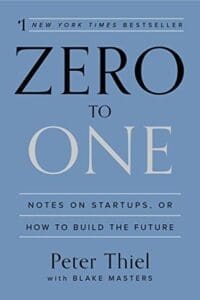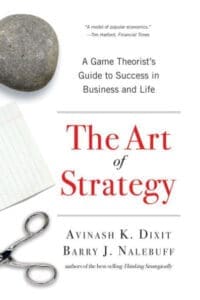Success often hinges not on sheer size or strength but on the ability to leverage asymmetries—those critical imbalances that can create significant advantages when understood and exploited.
In business, asymmetry refers to using unconventional strategies, unique advantages, or creative thinking to outmaneuver competitors who may initially appear more powerful.
Understanding and mastering these asymmetries is crucial for any business leader looking to innovate and stay ahead. To help you on this journey, we’ve compiled a list of essential reads that delve into the concept of asymmetry in business.
These books offer valuable insights, practical strategies, and thought-provoking perspectives that can empower you to navigate the complexities of the modern business landscape.
1. "Antifragile: Things That Gain from Disorder" by Nassim Nicholas Taleb

Overview: Taleb introduces the concept of antifragility—systems that thrive and grow when exposed to volatility, randomness, and stress.
In business, embracing antifragility means developing strategies that not only withstand disruptions but benefit from them. Taleb's work is a masterclass in turning perceived weaknesses into strengths, a fundamental aspect of asymmetric advantage.
Key Takeaway: Businesses that build antifragility into their DNA are positioned to survive disruptions and use them as opportunities for growth.
This means creating systems that evolve and improve under stress, making your business more resilient and adaptable than competitors who may be larger but more fragile. By embracing uncertainty and volatility, your business can turn challenges into catalysts for innovation and strength.
2. "Blue Ocean Strategy: How to Create Uncontested Market Space and Make the Competition Irrelevant" by W. Chan Kim and Renée Mauborgne

Overview: This groundbreaking book argues that instead of competing in crowded markets (red oceans), businesses should seek out "blue oceans" of uncontested market space.
By innovating and differentiating, companies can create value in ways that make the competition irrelevant, leveraging an asymmetric strategy to dominate new markets.
Key Takeaway: The core idea of a blue ocean strategy is to create a unique value proposition that competitors are not equipped to challenge. This involves identifying unmet needs, exploring non-customers, and innovating to redefine industry boundaries.
By doing so, your business can move away from zero-sum competition and toward creating new demand, establishing a market position where your strengths are maximized and your weaknesses are minimized.
3. "David and Goliath: Underdogs, Misfits, and the Art of Battling Giants" by Malcolm Gladwell

Overview: Gladwell explores how underdogs can succeed against seemingly insurmountable odds by leveraging their unique strengths and adopting unconventional approaches. The book explores how perceived disadvantages can become asymmetric advantages in business and beyond.
Key Takeaway: Business success isn’t about playing by the established rules; it’s about identifying where the rules are flawed or can be bent.
Gladwell’s analysis shows that underdogs often win by focusing on agility, creativity, and determination rather than trying to match their competitors' resources or scale.
For businesses, this means finding and exploiting areas where you can be nimble, respond quickly, and innovate faster than the competition, thereby turning your smaller size into a strategic advantage.
4. "The Innovator's Dilemma: When New Technologies Cause Great Firms to Fail" by Clayton M. Christensen

Overview: Christensen's classic examines how disruptive innovations can upend established industries, allowing smaller, agile companies to exploit asymmetries that larger firms overlook. The book underscores the importance of adapting and innovating in response to technological change.
Key Takeaway: Disruptive innovation capitalizes on the fact that established companies often ignore emerging technologies that initially seem insignificant but have the potential to redefine the market.
The lesson for small and medium-sized businesses is clear: focus on innovation that addresses unmet or underserved needs and be willing to challenge the status quo.
Doing so can create a market disruption that larger, more entrenched competitors are slow to respond to, allowing you to carve out a new, dominant position in the industry.
5. "Skin in the Game: Hidden Asymmetries in Daily Life" by Nassim Nicholas Taleb

Overview: Taleb explores having "skin in the game"—bearing the consequences of one’s actions—as a critical factor in ethical decision-making and sustainable success. In business, this translates into making decisions that align the risks and rewards, creating a balanced, asymmetric advantage over those who play it safe.
Key Takeaway: Having skin in the game ensures that decision-makers are directly affected by their decisions' outcomes, which fosters accountability and ethical behavior.
In a business context, this means structuring deals, partnerships, and strategies where all parties share risks and rewards.
This alignment creates a powerful asymmetry where your commitment and authenticity set you apart from competitors who may be more risk-averse or disconnected from the consequences of their decisions. Over time, this approach builds trust, loyalty, and a reputation for reliability.
6. "Zero to One: Notes on Startups, or How to Build the Future" by Peter Thiel with Blake Masters

Overview: Thiel argues that the most successful businesses create something entirely new—a "zero to one" moment—rather than merely improving on existing ideas. This approach creates a monopoly-like situation, a powerful asymmetric advantage that leaves competitors in the dust.
Key Takeaway: Thiel’s concept of going from zero to one is about pioneering innovation that iterates on existing ideas and creates new paradigms altogether.
This is the essence of asymmetric strategy: doing something so different and valuable that competition becomes irrelevant. For businesses, this means focusing on breakthroughs that create entirely new markets or drastically change existing ones.
By doing so, you position yourself as a market leader with a unique value proposition that competitors cannot easily replicate.
7. "The Art of Strategy: A Game Theorist's Guide to Success in Business and Life" by Avinash K. Dixit and Barry J. Nalebuff

Overview: Dixit and Nalebuff show how understanding and exploiting competitive asymmetries can lead to better strategic decisions by applying game theory to business. The book guides thinking several steps ahead of competitors, using asymmetric insights to gain the upper hand.
Key Takeaway: Game theory teaches that every strategic move has potential ripple effects that must be anticipated and planned for.
By understanding the asymmetries in power, information, and resources, businesses can outmaneuver their competition by predicting their moves and countering them effectively.
This approach requires deep analysis, strategic foresight, and the ability to think from multiple perspectives. It allows you to stay ahead in a competitive landscape where every advantage counts.
Conclusion: Embracing Asymmetric Business Strategy
Advantage
Asymmetry in business is not just a concept—it's a powerful tool that can be harnessed to create significant advantages, even when facing seemingly overwhelming competition.
These books provide the insights and frameworks necessary to understand and apply asymmetric strategies in your business endeavors. By learning from these thought leaders, you can master the art of turning disadvantages into strengths and challenges into opportunities, setting your business on a path to sustainable success.
Whether you're a startup looking to disrupt an industry or an established business seeking to innovate, embracing the power of asymmetry can be the key to unlocking your full potential.

Q&A: Applying Asymmetric Business Strategy
What does asymmetry in business strategy mean?
Asymmetry in business strategy refers to leveraging unique advantages, unconventional approaches, or imbalances in resources, information, or capabilities to gain a competitive edge. Instead of trying to outmatch competitors on their strengths, businesses using asymmetric strategies focus on areas where they can exploit their distinct strengths or where competitors are weak or unprepared.
How can small businesses use asymmetry to compete with larger companies?
Small businesses can leverage their agility, flexibility, and closer customer relationships to innovate quickly and respond to market changes faster than larger companies. By focusing on niche markets, offering personalized services, or adopting new technologies earlier, small businesses can create value in ways that larger companies, with their more rigid structures, cannot easily replicate.
What is an example of an asymmetric strategy in action?
An example of an asymmetric strategy is a startup that focuses on disruptive innovation, introducing a new technology that addresses an unmet need in the market. While larger competitors may overlook this niche because it seems too small or unprofitable, the startup can grow rapidly within this space, eventually redefining the market and outpacing larger, established firms that are slower to adapt.
Can asymmetric strategies be applied in all industries?
Yes, but the form asymmetry takes may vary depending on the industry. In tech, asymmetry might involve disruptive innovation, while in retail, it could be about creating a highly personalized customer experience that larger competitors can’t easily replicate. The key is identifying where your unique strengths intersect with market opportunities your competitors are not exploiting.
What are the risks of relying on asymmetric strategies?
Asymmetric strategies often involve taking risks that more conventional strategies avoid. For example, entering a new, untested market or adopting a cutting-edge technology can lead to significant gains. Still, it also risks failure if the market doesn’t materialize or the technology doesn’t perform as expected. It’s important to balance these risks with careful planning and a willingness to pivot if necessary.
How can leaders foster an environment that supports asymmetric thinking?
Leaders can encourage asymmetric thinking by fostering a culture of innovation, encouraging diverse perspectives, and rewarding creative problem-solving. Allowing room for experimentation and failure is also important, as these are often key components of developing successful asymmetric strategies. Additionally, investing in continuous learning and staying attuned to market trends can help identify opportunities for applying asymmetric approaches.
What role does technology play in asymmetric strategies?
Technology is often a critical enabler of asymmetric strategies, particularly in allowing businesses to do more with less. For example, small businesses can use data analytics to gain insights that were once only available to large corporations or leverage digital marketing to reach niche audiences more effectively. Technology can also facilitate rapid prototyping and testing of new ideas, allowing businesses to iterate and quickly improve their strategies.

Ready to Master Asymmetry Strategies for Your Business?
Harnessing the power of asymmetry can be the game-changer your business needs. Our team specializes in developing innovative, tailored strategies that exploit unique advantages and turn challenges into opportunities. Our expertise allows your business to achieve sustainable growth and outmaneuver even the toughest competitors.
Get Started with a Free Consultation!
Discuss how these proven concepts and our strategic insights can transform your business.
- Call me directly at: 608-410-4450
- Submit a contact form: Contact Us
- Arrange a consultation: Schedule Now
Don’t just compete—dominate your market by leveraging the strategic power of asymmetry. Partner with experts who understand how to apply these principles to drive success. Reach out today, and let’s begin crafting a future where your business stands out as a leader.
About the author
Mark A. Hope is the co-founder and Partner at Asymmetric Marketing, an innovative agency dedicated to creating high-performance sales and marketing systems, campaigns, processes, and strategies tailored for small businesses. With extensive experience spanning various industries, Asymmetric Marketing excels in delivering customized solutions that drive growth and success. If you’re looking to implement the strategies discussed in this article or need expert guidance on enhancing your marketing efforts, Mark is here to help. Contact him at 608-410-4450 or via email at mark.hope@asymmetric.pro.

